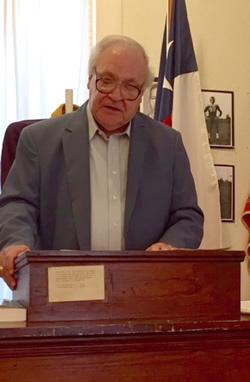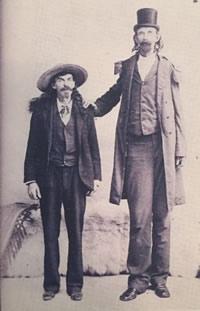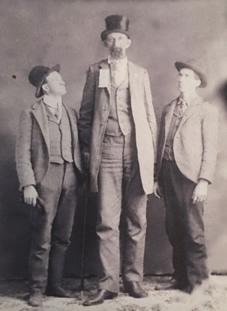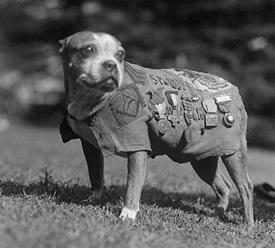 April 25, 2017 - Neal Murphy presented to the Shelby County Museum Tuesday, April 18, 2017 a program on Serendipity. Serendipity means a "fortunate happenstance" or "pleasant surprise" while searching for something else.
April 25, 2017 - Neal Murphy presented to the Shelby County Museum Tuesday, April 18, 2017 a program on Serendipity. Serendipity means a "fortunate happenstance" or "pleasant surprise" while searching for something else.
Mr. Murphy is a native of San Augustine and is the author of several books and over 40 short stories covering his years growing up in San Augustine County. He earned a Bachelor degree in Business Administration from Stephen F. Austin, a Master degree in general insurance and sold insurance for more than 40 years. Mr. Murphy began his writing career in 2005 after retiring in 2001. His current book is titled “East Texas Serendipity.”
One of the stories shared was titled “The Texas UFO”. He stated unidentified flying objects have been around for a long time, the most notorious of these being the Roswell, New Mexico event. On July 7, 1947, a UFO crashed near Roswell on a cattle ranch, scattering debris over a wide area. Several bodies of extraterrestrial beings were reportedly recovered and autopsied. This event was explained by the military as a weather balloon crash, no beings being recovered. This was the beginning of the most notable cover up in American history.
Before this event, some fifty years earlier, a UFO crashed in Aurora, Texas. The UFO was seen flying over Missouri and Arkansas before it crashed. Around 6 am on April 17, 1897, the UFO crashed near the small town of Aurora, Texas. Remember this was five years before the Wright brother’s first flight.
There were numerous eye witnesses of this crash in Aurora. One eye witness account stated “it sailed over the square finally hitting the tower of Judge Proctor’s windmill and went to pieces, scattering debris over several acres wrecking the windmill and water tank and destroying the Judge’s flower garden.”
The pilot of the UFO is supposed to have been the only one on the vehicle and enough remained to show he was not an inhabitant of this world. Many thought he may be a native of Mars and the ship was made of an unknown material and thought to be a mixture of aluminum and silver. The pilot was given a Christian burial with his grave marked with a large stone.
To add to the mystery, Mr. Oates who had purchased the property in 1945, cleaned out the well to use as a water source. He soon developed a severe case of arthritis which he claimed was caused by the contamination of the debris placed in the well after the UFO crashed. Oates sealed up the well with a concrete slab in 1957 with many forgetting about the crash. Many citizens of Aurora later developed a hoax theory about the crashed. The event was resurrected by a local TV station in Dallas in 1998. The investigation revealed that something had crashed in 1897 but could find no evidence of an extraterrestrial being. The cemetery association refused exhumation of the body and an unmarked grave near other 1890’s graves was found in the area. The grave was so badly deteriorated that further investigation of the grave was not able to reveal any additional information.
 Another story shared was the story of the giant, titled “The Confederate Giant”. One would only imagine what Union soldiers thought at the sight of a giant wearing a confederate uniform. Henry Clay Thruston may have been the tallest man in the world at the time he lived. He towered over everyone at a height of 7 feet 7 ½ inches with the average height of the Union soldier being 5 feet 8 inches. This Rebel soldier towered over all the other fighting men like a pine sapling.
Another story shared was the story of the giant, titled “The Confederate Giant”. One would only imagine what Union soldiers thought at the sight of a giant wearing a confederate uniform. Henry Clay Thruston may have been the tallest man in the world at the time he lived. He towered over everyone at a height of 7 feet 7 ½ inches with the average height of the Union soldier being 5 feet 8 inches. This Rebel soldier towered over all the other fighting men like a pine sapling.
 Henry was born May 4, 1830 in Greenville, South Carolina but his family soon moved to Missouri. When the Civil war broke out, Henry joined the Confederate Calvary. Thruston survived the war with only a couple of minor wounds. He became a prisoner of war late in the conflict, but did not spend long in confinement, being paroled June of 1865.
Henry was born May 4, 1830 in Greenville, South Carolina but his family soon moved to Missouri. When the Civil war broke out, Henry joined the Confederate Calvary. Thruston survived the war with only a couple of minor wounds. He became a prisoner of war late in the conflict, but did not spend long in confinement, being paroled June of 1865.
After the war, Thruston with his family migrated to Texas, stopping when he got to Titus County. There he purchased 100 acres of land east of Mount Vernon, Texas, and spent most of the rest of his life there.
For years after the war, he traveled with a circus, and was always billed in the side shows are “The World’s Tallest Man. To accent his height, he wore a tall beaver hat, high-top boots, and long coat making him look ten feet tall.
 The next story share was titled “Sergeant Stubby”. Everyone loves a dog story. Dogs are specially trained to do amazing thing. The military now trains dogs to use in battle. A few dogs were used in WWII, but it was unusual for them to see action in WWI as Sgt. Stubby did. Sgt. Stubby was the most decorated war dog in WWI, and the only dog to be promoted to sergeant through combat.
The next story share was titled “Sergeant Stubby”. Everyone loves a dog story. Dogs are specially trained to do amazing thing. The military now trains dogs to use in battle. A few dogs were used in WWII, but it was unusual for them to see action in WWI as Sgt. Stubby did. Sgt. Stubby was the most decorated war dog in WWI, and the only dog to be promoted to sergeant through combat.
The story is about a stray, a homeless mutt who saved more lives, saw more combat, and performed more feats of heroic greatness than most humans. Stubby was a Pit Bull Terrier who started his humble life as most stray animals do – hungry, cold, alone, and stranded in New Haven, Connecticut. Stubby stumble onto the parade grounds of Yale University where the men of the 102nd Regiment, 26th Infantry Division were training to fight in WWI.
The little dog was adopted by a soldier named John Robert Conroy who named the puppy “Stubby” because of his stump of a tail. Conroy started leaving food out and let the little guy sleep in the barracks from time to time. It was not long before every soldier in the 102nd adopted the dog as their mascot.
Not long after hanging around the drill field watching the soldiers do their things, Stubby learned the bugle calls, could march with the men, and was trained to salute superior officers by raising his forepaw to his brow.
Conroy smuggled Stubby on board the ship when the 102nd was ordered to ship out to battle in France. Conroy waited until they were safely out to sea, before he brought the dog out and all the sailors decided this dog was so great they had a machinist mate make him a set of dog tags to match the ones worn by the soldiers.
Stubby served with the 102nd Infantry, 26th Yankee Division in trenches of France for 18 months and participated in 4 offenses and 17 battles. He entered combat on February 5, 1918 at Chemin des Dames and was under constant fire, day and night for over a month. April 1918, during a raid, Stubby was wounded in the foreleg by the retreating Germans. He was sent to the rear for convalescence, and was able to improve the morale of wounded soldiers.
When he recovered from his wounds, Stubby returned to the trenches.
Stubby was injured by mustard gas. After he recovered, he learned to warn his unit of poison gas attacks, locate wounded soldiers, and since he could hear the whine of incoming artillery shells before humans — became adept at letting his unit know when to duck for cover.
Stubby was solely responsible for capturing a German spy hiding in the trenches by biting the spy in the posterior and holding on until captured by American soldiers. It was told he could tell the difference between German and English. Following the retaking of Chateau by the US, the women of the town made Stubby a coat on which were pinned his many medals. For his action, Stubby was promoted to the rank of sergeant which made him outrank his owner who was only a corporal.
After the war, Conroy smuggled Stubby back to the states where he became an instant celebrity. He was inducted into the American Legion, offered free food for life from the YMCA, and toured for the war bond effect where hotel would relax their “no dogs allow policy”. He visited the White House twice, met 3 presidents, and in 1921 Commander Black Jack Pershing pin a “dog hero” dog medal on Stubby’s military jacket.
Sgt. Stubby, American war hero, died in 1926 at the age of 10. He was stuffed and preserved by taxidermist and is featured at his own exhibit at the Smithsonian Museum of American History.









